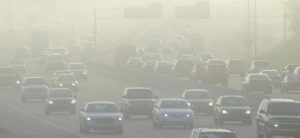 Several recent studies have found that constant exposure to high levels of air pollution has negative effects on the brain. The last post described negative effects on the gray matter in brains (resulting in smaller brain volumes) of elderly women from air pollution, but this study found negative effects (lower grade point averages) in young children from high air pollution. From Environmental Health News:
Several recent studies have found that constant exposure to high levels of air pollution has negative effects on the brain. The last post described negative effects on the gray matter in brains (resulting in smaller brain volumes) of elderly women from air pollution, but this study found negative effects (lower grade point averages) in young children from high air pollution. From Environmental Health News:
Bad air means lower grade point averages in Texas
Fourth and fifth graders in El Paso, Texas, are more likely to have lower grade point averages if heavily exposed to contaminated air at home, according to a new study.It bolsters a growing body of evidence that air pollution can impair success in school.
They found that for all types of air pollution sources, more exposure corresponded with lower grade point averages. Only one type of pollution—point sources such as factories—was not significantly linked to lower grade point averages.University of Texas at El Paso researchers analyzed the grade point averages of 1,895 children and, using their home location, estimated their exposure to air toxics—such as benzene, arsenic, lead, mercury, hydrochloric acid, toluene, vinyl bromide, xylenes, and diesel particulate matter—using federal data.
“Effects appear to be insidious, since they are mild, unlikely to be perceived, and, hence, unlikely to be addressed in any way … seemingly trivial effects on children’s development may translate into substantial impacts throughout the life course in terms of physical and mental health and personal success,” the authors wrote.The researchers did control for some other things that can affect children’s grades such as poverty, mother’s age, education and ability to speak English, and the child’s race and sex.
Still, the study doesn’t prove that dirty air makes kids do worse in school. It does, however, suggest children’s developing bodies are more susceptible to air pollution, which can harm their respiratory systems and brain.Air pollution might hamper kids’ grades via two primary ways: Illnesses, mostly respiratory, that would make them miss school, and developmental problems resulting from long-term exposure, said Sara Grineski, an associate professor of sociology at The University of Texas at El Paso and co-author of the new study.
Others have found similar links between air pollution and academic performance. Three months ago Columbia University's Perera and colleagues reported that New York City children born to mothers in poverty and exposed to certain air toxics during pregnancy had lower IQs. Perera, tracking the mothers and children since before birth, said the pollution exposure prior to birth is more strongly linked to learning and behavioral problems.
In the current study it’s unclear if the children were exposed in their mothers’ womb—an exposure window that is critical to brain development, Perera said....Other studies support this—in February Calderón-Garcidueñas and colleagues reported Mexico City smog was linked to impaired short-term memory and IQ in children.
The city is more than 80 percent Hispanic....Previous studies have shown that El Paso’s minorities are disproportionately impacted by toxics, Grineski said. The city of 675,000 is one of the worst when it comes to particulate matter—a mix of substances emitted by combustion sources, including cars, trucks, industrial plants and wood burning—especially coarse particulates, PM10, those between 2.5 and 10 micrometers (from about 25 to 100 times thinner than a human hair, according to the EPA). El Paso’s 24-hour PM10 average is about 233 micrograms per cubic meter of air, according to the latest EPA data from 2013, which was eighth highest among more than 500 U.S. cities. El Paso, along with Laredo, has the highest carbon monoxide levels in Texas.
